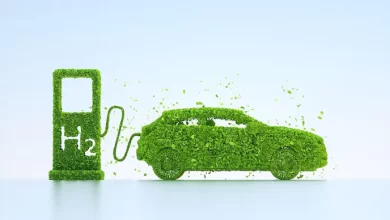Fischer Tropsch’s e-fuels technology may be the future of e-gasoline, e-diesel or e-jet fuel.
Internal combustion engines are the main source of CO2 emission in air. In 2020 estimated 7.2 billion metric tons of carbon dioxide (CO2) emitted in the atmosphere from transportation run by Internal combustion engines.
To reduce CO2 emission most automobile industries turned into production of Hybrid, BEV, EV or Hydrogen (ICE & fuel cell) driven cars but great disadvantage of electrification is low mileage range, storage, unavailability of raw materials, production cost, energy density and so on. Also it’s not possible to electrify all transport and obsolete billions of IC engines.
There is another possibility of CO2 recycling and converting back into synthetic gasoline diesel and jet fuel using the Fischer Tropsch process.
Another company in California named Prometheus also produces low cost e-fuels from CO2 but in a different way than Porsche.
They dissolve CO2 in water then electrolyze the solution to produce CO2 into alcohol then they transform these alcohols to a particular fuel they want. Prometheus calls it “Reverse Combustion Process” This process doesn’t require CO2 separation from water and no external Hydrogen needed and saves a ton of energy in the production process.
Advantages,
- e-Fuels are carbon neutral
- Reduces atmospheric CO2
- Contains no sulfur content
- Same energy density as normal gasoline
- Can use renewable green in production
- No modification needed to use in existing IC Engines.
Disadvantage,
- Complex production process
- Large space needed for renewal energy
- Production cost is to high (5 Times costly than todays normal fossil fuel)
- Efficiency is only 16% depending on production cost whereas fossil gasoline has 35% efficiency.
But Manufactures hope that improvement of production process will reduce cost and will be the same price as normal fossil fuels in near future. Research centers are working closely on that.
Qatar & South Africa were producing petroleum liquids using the Fischer Tropsch process from natural gas and coal for the last 70 years. The LTFT facility Pearl GTL at Ras Laffan, Qatar, is the second largest FT plant in the world after Sasol’s Secunda plant in South Africa. It uses cobalt catalysts at 230 °C, converting natural gas to petroleum liquids at a rate of 140,000 barrels per day (22,000 m3/d), with additional production of 120,000 barrels (19,000 m3) of oil equivalent in natural gas liquids and ethane.
Another plant in Ras Laffan, called Oryx GTL, was commissioned in 2007 with a capacity of 34,000 barrels per day (5,400 m3/d).
The world’s largest scale implementation of Fischer–Tropsch technology is a series of plants operated by Sasol in South Africa, a country with large coal reserves, but little oil. With a capacity of 165 000 Bpd at its Secunda plant. The first commercial plant opened in 1952. Sasol uses coal and now natural gas as feedstocks and produces a variety of synthetic petroleum products, including most of the country’s diesel fuel.
Except these PetroSA, Shell middle distillate synthesis, Velocys, SGCE, UPM (Finland), Rentech and INFRA GTL Technology also produces synthetic fuels.
Thanks to Scientists who work hard to find solutions to prevent air pollution and save the global atmosphere.

